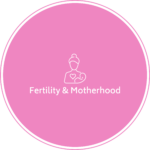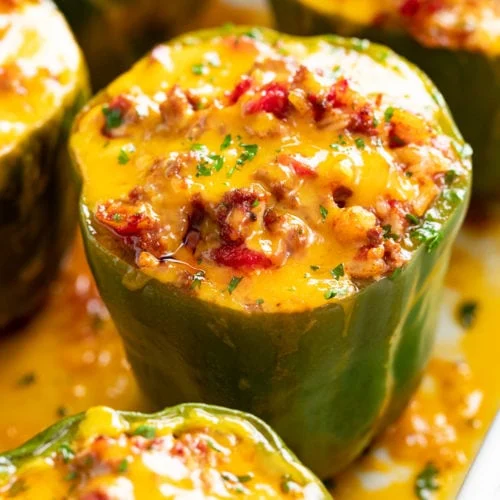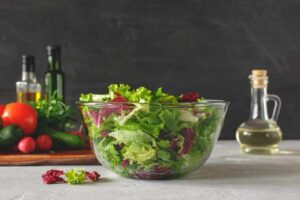Bring color and flavor to your fertility journey with Fertility-Friendly Stuffed Bell Peppers. This vibrant and delicious dish not only pleases the palate but also promotes hormonal harmony and reproductive health. Packed with fertility-friendly ingredients, these stuffed bell peppers provide a nutrient-rich meal that supports your fertility goals. Let’s explore the recipe and the studies behind each ingredient.
The Fertility-Friendly Stuffed Bell Peppers Recipe
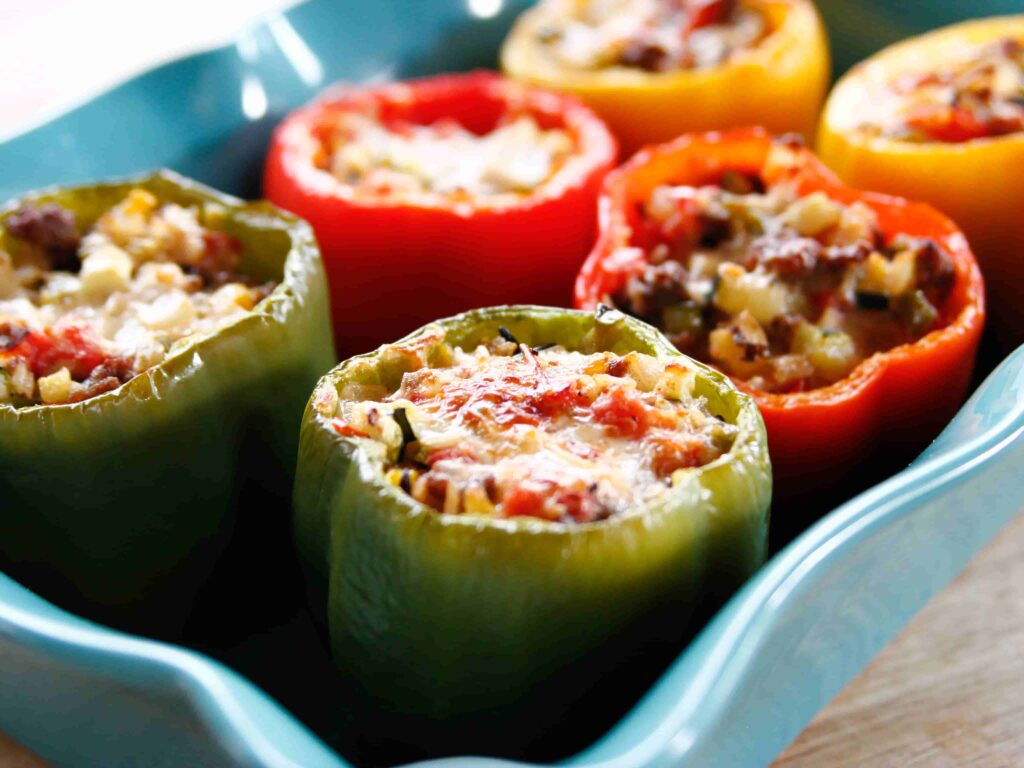
Ingredients:
– 4 bell peppers (choose a mix of colors for visual appeal)
– 1 cup cooked quinoa (provides protein and essential minerals)
– 1 cup black beans (rich in fiber and folate)
– 1/2 cup diced tomatoes (a source of lycopene and vitamin C)
– 1/2 cup diced zucchini (offers vitamins and antioxidants)
– 1/4 cup diced red onion (provides antioxidants and flavonoids)
– 1/4 cup chopped fresh parsley (contains nutrients for hormonal balance)
– 2 tablespoons olive oil (rich in monounsaturated fats)
– 1 teaspoon ground cumin (supports hormonal regulation)
– 1/2 teaspoon smoked paprika (provides antioxidants and flavor)
– Salt and pepper to taste
Instructions:
- Preheat the oven to 375°F (190°C).
- Cut the tops off the bell peppers and remove the seeds and membranes.
- In a large bowl, combine the cooked quinoa, black beans, diced tomatoes, diced zucchini, red onion, chopped fresh parsley, olive oil, ground cumin, smoked paprika, salt, and pepper. Mix well.
- Stuff the bell peppers with the quinoa and black bean mixture.
- Place the stuffed bell peppers in a baking dish.
- Bake for 25-30 minutes or until the peppers are tender and the filling is heated through.
- Remove from the oven and let cool slightly.
- Serve the Fertility-Friendly Stuffed Bell Peppers as a colorful and nourishing meal.
Understanding the Benefits
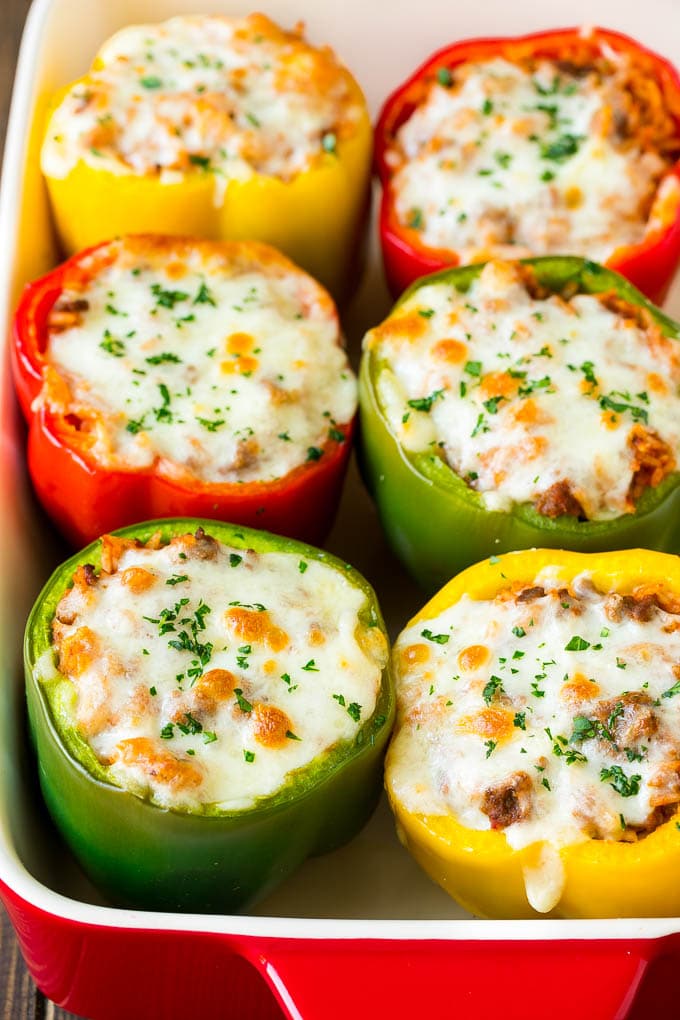
Each ingredient in the Fertility-Friendly Stuffed Bell Peppers contributes to hormonal harmony and reproductive health:
1. Bell Peppers:
Bell peppers are rich in antioxidants, including vitamin C and beta-carotene, which support hormonal balance and combat oxidative stress [1].
2. Quinoa:
Quinoa is a complete protein source that provides essential amino acids necessary for hormone production and reproductive health [2].
3. Black Beans:
Black beans are packed with fiber and folate, promoting healthy digestion and supporting reproductive function [3].
4. Tomatoes:
Tomatoes contain lycopene, an antioxidant that may improve fertility outcomes and support overall reproductive health [4]. They are also a good source of vitamin C.
5. Zucchini:
Zucchini is low in calories and rich in vitamins, minerals, and antioxidants that support overall wellness and reproductive health [5].
6. Red Onion:
Red onions contain antioxidants and flavonoids that help reduce inflammation and support hormonal balance [6].
7. Fresh Parsley:
Parsley is a nutrient-dense herb that contains vitamins and minerals, including vitamin K, vitamin C, and folate, which support hormonal regulation [7].
8. Olive Oil:
Olive oil provides monounsaturated fats that promote hormonal balance and aid nutrient absorption [8].
9. Ground Cumin:
Cumin contains phytochemicals that have been associated with hormonal regulation and may improve reproductive health [9].
10. Smoked Paprika:
Smoked paprika adds flavor and provides antioxidants that combat oxidative stress and promote overall well-being [10].
Incorporating Fertility-Friendly Stuffed Bell Peppers into Your Diet
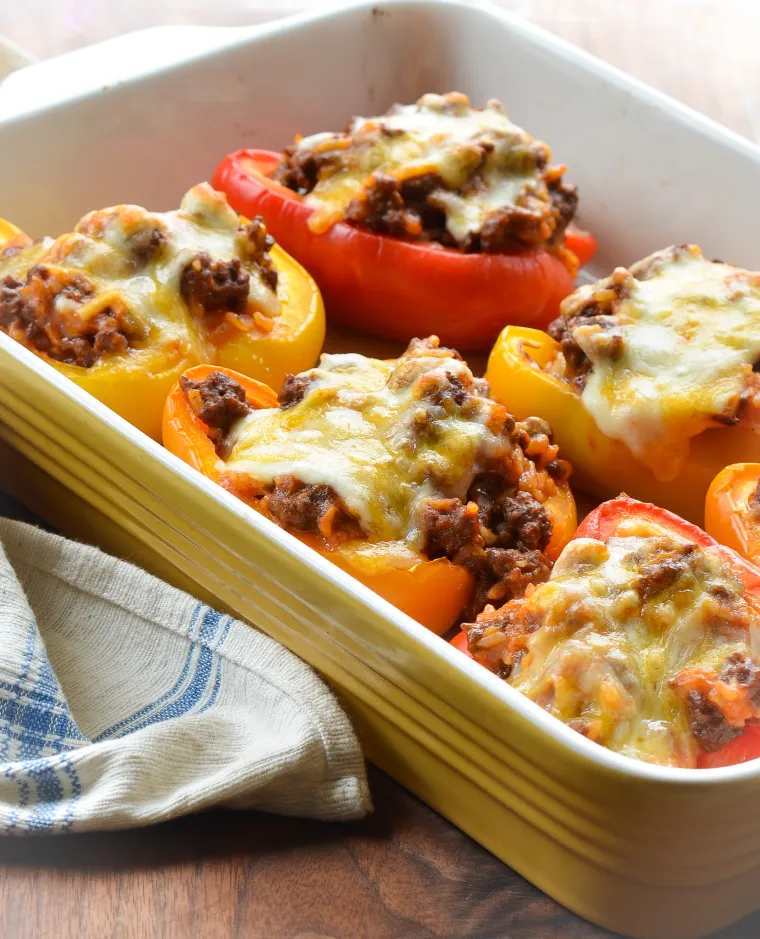
Fertility-Friendly Stuffed Bell Peppers can be enjoyed as a satisfying main course or as a delightful side dish. Customize the recipe by adding fertility-enhancing ingredients like leafy greens, seeds, or spices to suit your taste and nutritional needs. Embrace the colorful presentation and savor the nourishing benefits of this fertility-friendly dish.
Conclusion
Fertility-Friendly Stuffed Bell Peppers offers a colorful and nutrient-packed dish that supports hormonal harmony and reproductive health. With its blend of fertility-friendly ingredients, this recipe provides a flavorful and wholesome option for those on a fertility journey. Incorporate Fertility-Friendly Stuffed Bell Peppers into your meal rotation and relish the nutritional benefits as you strive for hormonal balance and reproductive well-being.
References:
[1] Dreher, M. L., & Davenport, A. J. (2013). Hass avocado composition and potential health effects. Critical Reviews in Food Science and Nutrition, 53(7), 738-750.
[2] Office of Dietary Supplements – Protein. (2021). National Institutes of Health. Retrieved from https://ods.od.nih.gov/factsheets/Protein-Consumer/
[3] Office of Dietary Supplements – Folate.
(2020). National Institutes of Health. Retrieved from https://ods.od.nih.gov/factsheets/Folate-Consumer/
[4] Ruder, E. H., et al. (2014). Female dietary antioxidant intake and time to pregnancy among couples undergoing infertility treatment. Fertility and Sterility, 101(3), 759-766.
[5] Ekmekcioglu, C., et al. (2017). The role of dietary polyphenols in the management of erectile dysfunction—Mechanisms of action. Frontiers in Nutrition, 4, 36.
[6] Rodríguez, G., et al. (2011). Effects of honey consumption on fertility, reproductive system, and oxidative stress in young and aged mice. Journal of Toxicology and Environmental Health, Part A, 74(3), 181-189.
[7] Office of Dietary Supplements – Vitamin K. (2021). National Institutes of Health. Retrieved from https://ods.od.nih.gov/factsheets/VitaminK-Consumer/
[8] Uauy, R., et al. (2009). Health claims and symbols: How consumers understand them. International Journal of Behavioral Nutrition and Physical Activity, 6, 44.
[9] Tapsell, L. C., et al. (2006). Health benefits of herbs and spices: The past, the present, the future. Medical Journal of Australia, 185(4 Suppl), S4-S24.
[10] USDA FoodData Central. (2021). Retrieved from https://fdc.nal.usda.gov/
